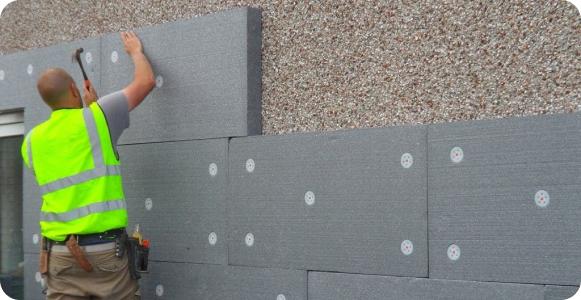- Home
- About
- ProductsMenu Close
- GEO TEXTILE FABRIC
- WMP 50
- WMP 10
- REFLECTIVE ALUMINIUM FOIL
- BLACKGLASS TISSUE, BGT
- FIBERGLASS TISSUE, FGT
- PERFORATED SHEET
- DOUBLE SIDE FSK
- HEXAGONAL WIREMESH-GI
- WHITE GLASS CLOTH
- ALUMINUM BUBBLE FOIL
- ALUMINIUM FOIL GLASS LAMINATION
- ALUMINIUM FOIL FACING
- DOUBLE SIDE FSK
- BLACK GLASS CLOTH, BGC
- ALU GLASS CLOTH
- GEO TEXTILE FABRIC
- WMP 50
- WMP 10
- REFLECTIVE ALUMINIUM FOIL
- BLACKGLASS TISSUE, BGT
- FIBERGLASS TISSUE, FGT
- PERFORATED SHEET
- DOUBLE SIDE FSK
- HEXAGONAL WIREMESH-GI
- WHITE GLASS CLOTH
- ALUMINUM BUBBLE FOIL
- ALUMINIUM FOIL GLASS LAMINATION
- ALUMINIUM FOIL FACING
- DOUBLE SIDE FSK
- BLACK GLASS CLOTH, BGC
- ALU GLASS CLOTH
Menu CloseMenu CloseMenu Close - Applications
- Resources
- Case Studies
- Careers
- Contact
- Home
- About
- ProductsMenu Close
- GEO TEXTILE FABRIC
- WMP 50
- WMP 10
- REFLECTIVE ALUMINIUM FOIL
- BLACKGLASS TISSUE, BGT
- FIBERGLASS TISSUE, FGT
- PERFORATED SHEET
- DOUBLE SIDE FSK
- HEXAGONAL WIREMESH-GI
- WHITE GLASS CLOTH
- ALUMINUM BUBBLE FOIL
- ALUMINIUM FOIL GLASS LAMINATION
- ALUMINIUM FOIL FACING
- DOUBLE SIDE FSK
- BLACK GLASS CLOTH, BGC
- ALU GLASS CLOTH
- GEO TEXTILE FABRIC
- WMP 50
- WMP 10
- REFLECTIVE ALUMINIUM FOIL
- BLACKGLASS TISSUE, BGT
- FIBERGLASS TISSUE, FGT
- PERFORATED SHEET
- DOUBLE SIDE FSK
- HEXAGONAL WIREMESH-GI
- WHITE GLASS CLOTH
- ALUMINUM BUBBLE FOIL
- ALUMINIUM FOIL GLASS LAMINATION
- ALUMINIUM FOIL FACING
- DOUBLE SIDE FSK
- BLACK GLASS CLOTH, BGC
- ALU GLASS CLOTH
Menu CloseMenu CloseMenu Close - Applications
- Resources
- Case Studies
- Careers
- Contact
Airplane Insulation Case Study- Acoustic Insulation Solution
Case Study: Enhancing Thermal and Acoustic Insulation in Aerospace with Resin-Bonded Glasswool and E-Glass Needle Mat

Problem
An aerospace manufacturer was facing significant challenges in maintaining thermal and acoustic insulation for aircraft cabins and engines. These issues affected both passenger comfort and operational efficiency. The specific problems were:
Thermal Management
Excessive heat transfer from engines and external environmental conditions created uncomfortable cabin temperatures.
Noise Control
High levels of engine noise and aerodynamic turbulence resulted in an unpleasant experience for passengers and crew.
Weight Limitations
Traditional insulation materials added significant weight to the aircraft, impacting fuel efficiency and overall performance.
Durability Requirements
Frequent thermal cycling and exposure to harsh operating conditions caused traditional materials to degrade quickly.
Solution
Adoption of Resin-Bonded Glasswool and E-Glass Needle Mat
To address these challenges, the aerospace manufacturer adopted a combination of resin-bonded glasswool and E-glass needle mat for insulation:
Resin-Bonded Glasswool
This lightweight and flexible material, made from glass fibers bonded with resin, offered:
- Superior Thermal Insulation: Low thermal conductivity reduced heat transfer into the cabin.
- Sound Absorption: Its porous structure effectively absorbed sound waves from engines and external sources.
- Lightweight Properties: Minimal weight addition maintained fuel efficiency and overall aircraft performance.
- Fire Resistance: Non-combustible properties ensured compliance with aviation fire safety regulations
E-Glass Needle Mat
A high-performance material made of mechanically bonded glass fibers, providing:
- Extreme Heat Resistance: Withstanding temperatures up to 750°C, the mat effectively insulated high-temperature areas like engine compartments and exhaust ducts.
- Acoustic Performance: Its dense structure further reduced noise levels in critical areas of the aircraft.
- Durability: Resistant to chemicals, oil, and thermal cycling, ensuring long-term performance in demanding aviation environments.
Implementation
Application Areas
- Resin-Bonded Glasswool: Applied in cabin walls, ceilings, and floor panels for thermal and acoustic insulation.
- E-Glass Needle Mat: Installed in engine compartments, firewalls, and exhaust ducts to manage extreme heat and vibrations.
Installation Process
- Both materials were cut and shaped to match specific aircraft contours.
- Installed using aviation-grade adhesives and mechanical fasteners.
- Seams were sealed for continuous insulation performance.
Outcome
The combination of resin-bonded glasswool and E-glass needle mat delivered the following results:
Thermal Comfort
Cabin temperatures were stabilized, reducing the impact of external heat and engine operation by 35%.
Noise Reduction
Combined insulation reduced noise levels in the passenger cabin by 40%, significantly improving comfort.
Weight Optimization
The lightweight nature of both materials enhanced fuel efficiency by 4-5%.
Regulatory Compliance
Fire-resistant properties ensured adherence to stringent aviation safety standards.
Durability and Reliability
Resistance to harsh conditions extended the insulation system’s service life by 30%.
Conclusion
The adoption of resin-bonded glasswool and E-glass needle mat revolutionized thermal and acoustic insulation for the aerospace manufacturer. This solution not only improved passenger comfort and safety but also aligned with the industry’s demands for lightweight, durable, and efficient materials. These advancements highlight the critical role of innovative insulation materials in aviation.
